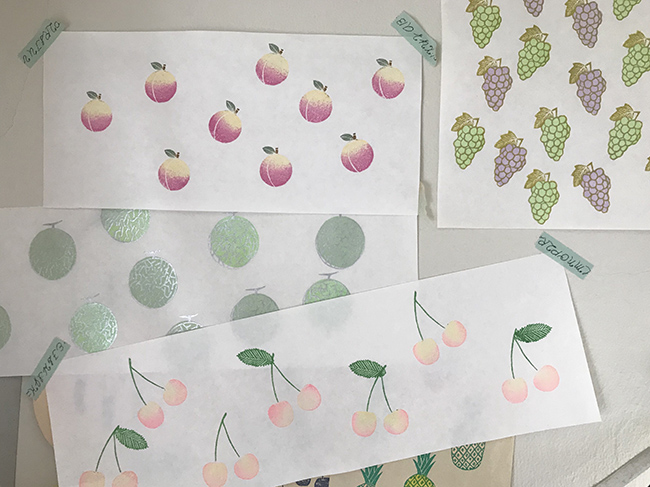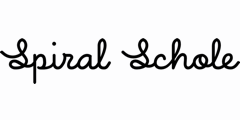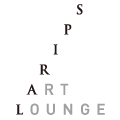Welcome to our ‘spiral market selection’ interview series, where we look at living from the viewpoint of artists and creators engaged in craftsmanship for daily life. In our fourteenth interview, we spoke with Kana Matsubara of kanaexpress, who makes postcards and other items with ‘eraser prints’.

──Enchanted by prints
I loved doing craft as a child, and when I was 18 I decided to study at art school overseas in London. I learned about all different fields of artistic production, but I was most taken by the techniques behind printmaking – silkscreen, copperplate, lithograph, and especially rubber. I went on to art university and for my graduation works I presented a piece that was a crossover between animation and printmaking. That was my inspiration to pursue printmaking further.
On my return to Japan I discovered eraser stamps – which are easy to make even without a large studio or equipment. So I started it as a hobby while I worked. It gradually expanded and a friend displayed my pieces at their café – this all began 15 years ago.

──Postcards for interior decoration: a taste of art
I’ve always collected postcards to decorate my room. I think if you can’t afford to buy art, you can get a taste of it by decorating with postcards. My main focus when I started eraser printmaking was postcards. The price is set so customers can keep buying new cards, and I also frame cards to make it easier for customers to decorate with them.
I carve my eraser print designs based on sketches and photos. I use a design knife and a triangular chisel. It really doesn’t take that long. I don’t usually start with a detailed plan – ideas come to me in the process. I often combine new motifs with previous print designs or change the color of prints I’ve released before. I’m fascinated by the endless possibilities.
My craft is fairly analog – I print every postcard and message tag by hand. Even if I imprint the design in the same place, each one comes up with different levels of gradation and the colour soaks in differently. And even if the design is slightly blurred or not aligned, if I like the feel, I keep them. My multicolor prints cover two styles: one where I make only the same number of prints as the different colors, and the other where I use multiple colors on one print.
When making envelopes, I do all the steps myself, starting with cutting the paper to size. I’ve always loved working with my hands and I find it such a refreshing change of pace to do somewhat mindless tasks in between my other work that requires deep concentration, like drawing designs and carving stamps. I plan to keep working in this way because if I wanted to expand and increase production I’d have to go through a production company, which would raise my costs and make it difficult to maintain the price-point that makes my work accessible.

──The fun is in the printing process
No matter what technique you use in printmaking, I love how there’s always this extra layer, this medium that it passes through. Until you stamp it, you don’t know how it will turn out; you see your design for the first time when it appears as the printed version. Even though I’m in charge of every step of the process, it feels like there’s some element in the middle. I really don’t know how to explain it.
I sometimes run workshops, and the participants are always wowed by their prints. They worry when they’re carving that it’s no good, but then it turns out so well in the print. A mistakenly uncarved part sometimes brings more flavour to a piece. It’s very cool how when you carve, left and right are opposite, so you can’t really see how it will come together until you stamp it. With eraser prints, the very act of printing is all part of the fun.

──Eraser prints
While my art is often referred to as “eraser stamps”, I like to call my works “eraser prints”. That’s because I don’t sell the stamps – I sell the prints made from them. Unlike typical eraser stamps which are usually stand-alone, and use motifs that are cute and have a finished look, my pieces take on a somewhat surreal feel. I think the main reason for this is the fact that to me, printmaking is about building a scene through stamping.
In the future I’d love to continue my current work while also working as an illustrator and submitting drawings. After all, the more stamps you stamp, the better, don’t you think?
Interview and editing by Spiral

Studied printmaking and graphic design at art university in London.
Since returning to Japan, works on illustrations and various pieces made with eraser prints.
Instagram ID: kanaexpress / kanaexpress_printworks

Venue:Spiral Market
*This exhibition has ended





